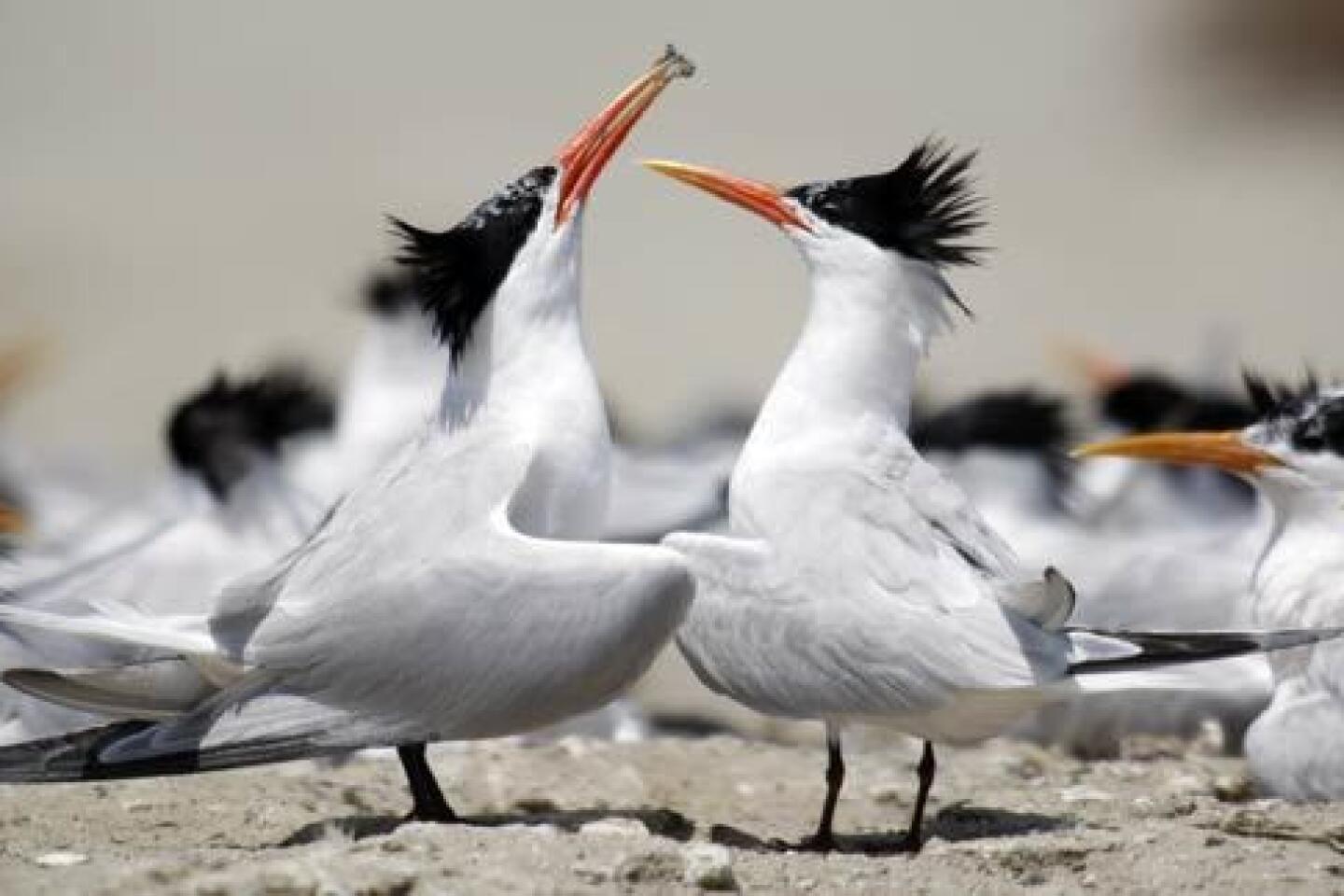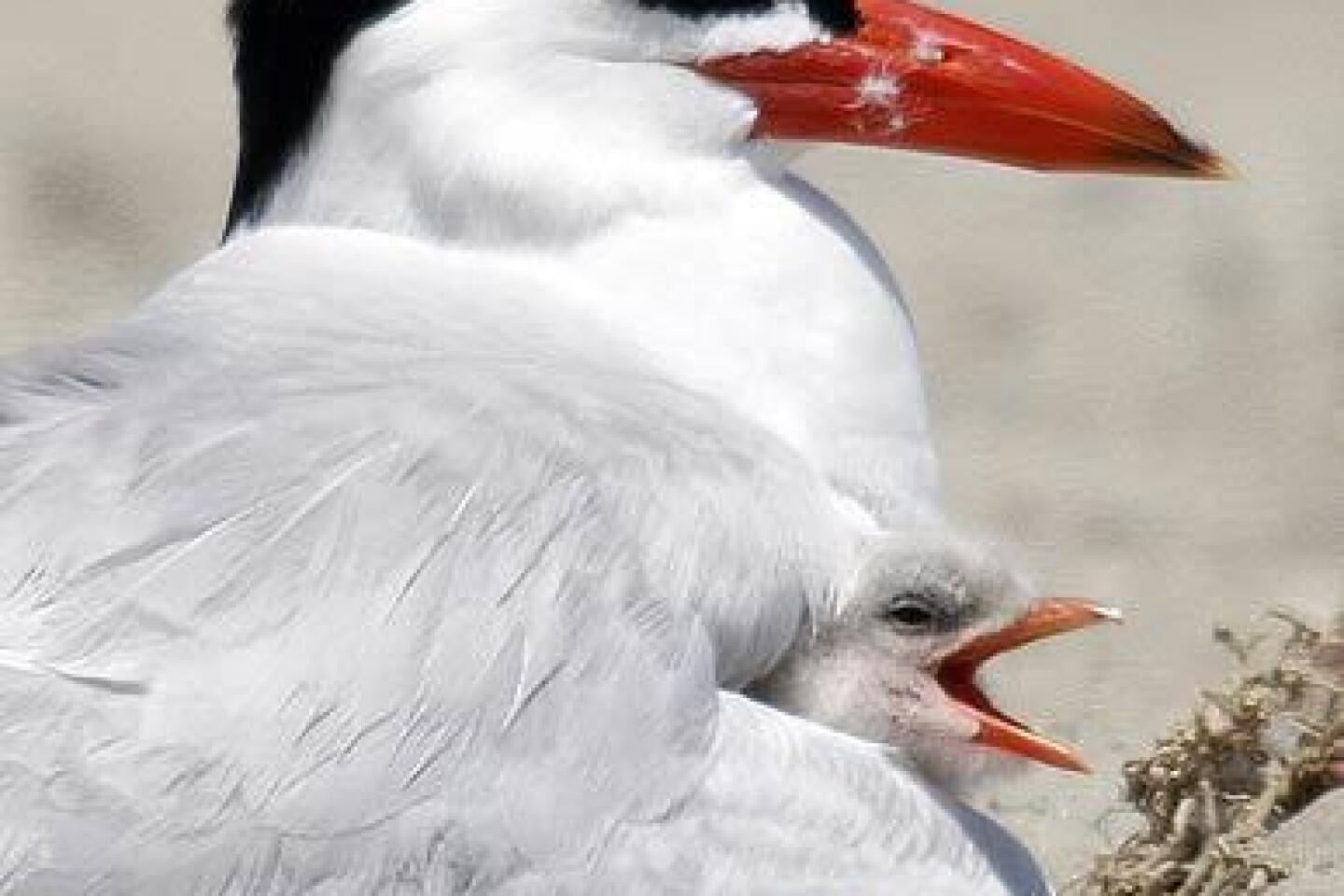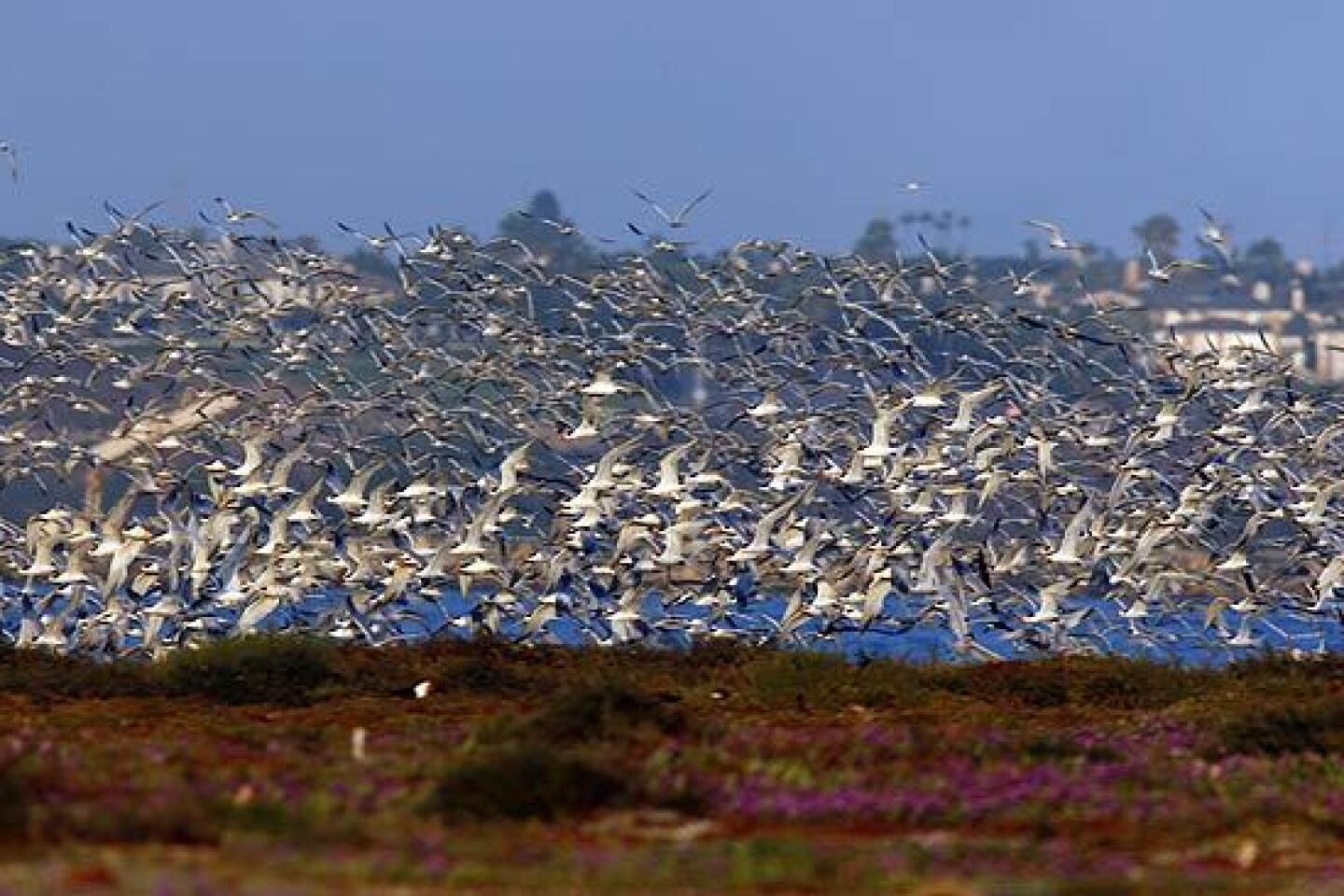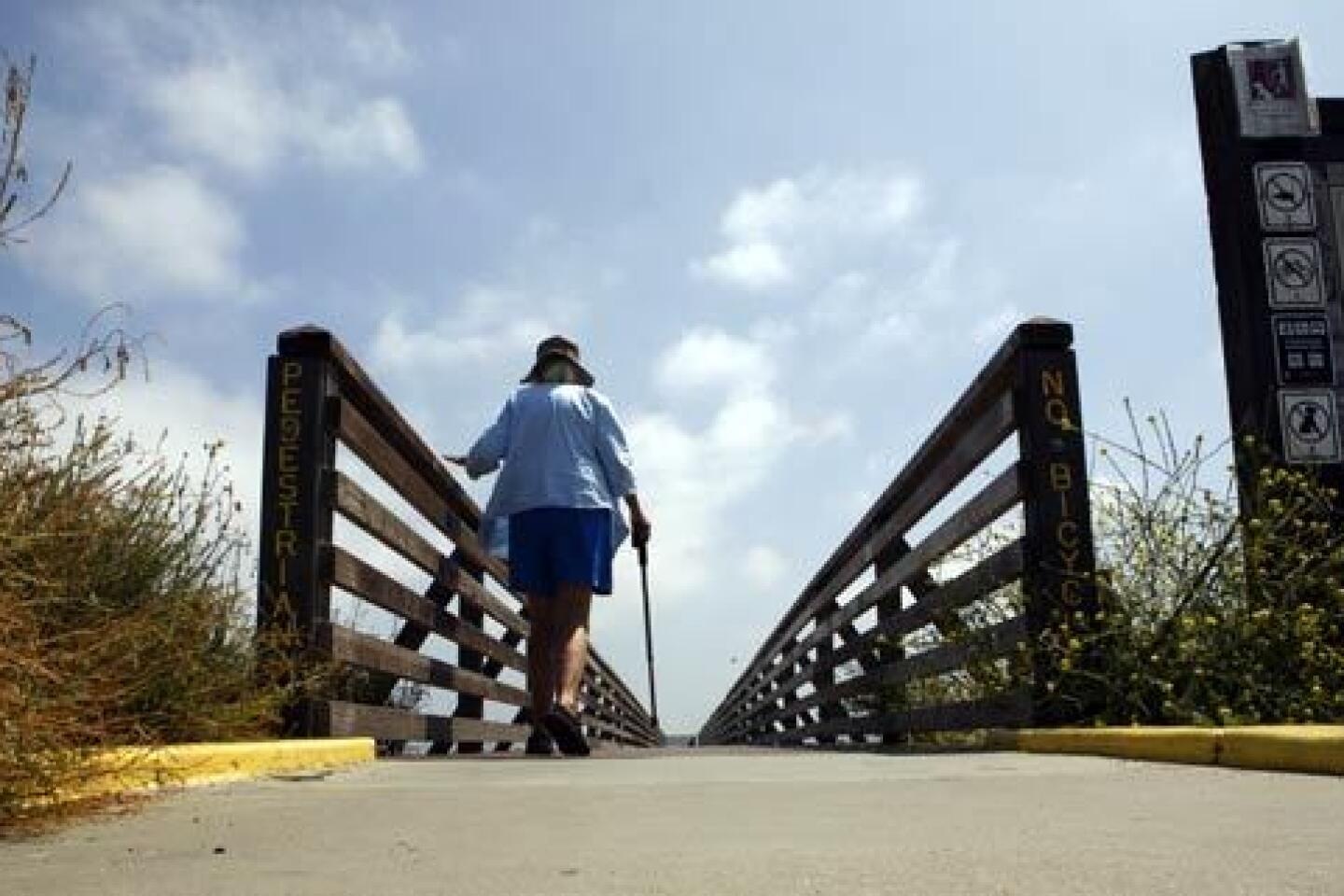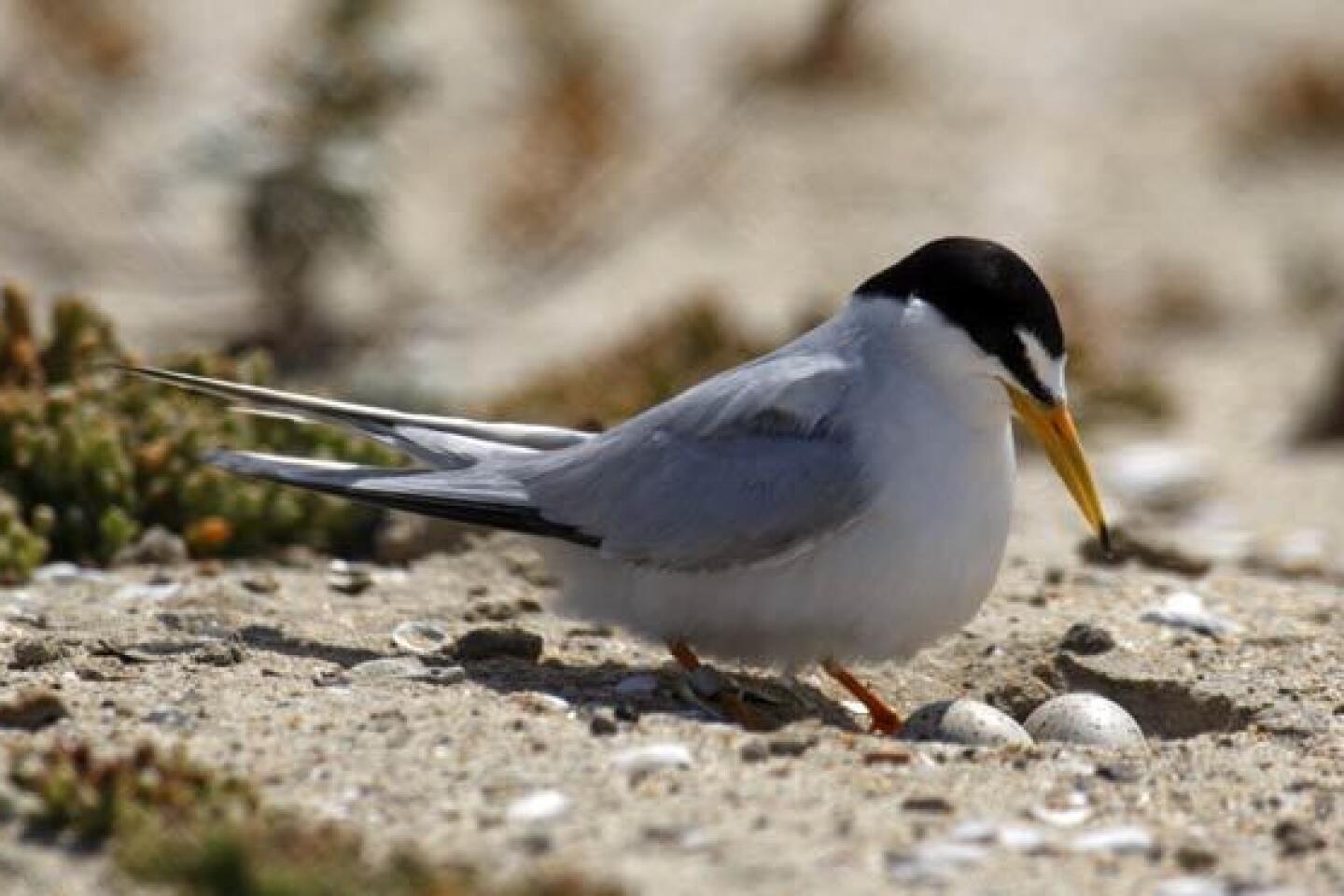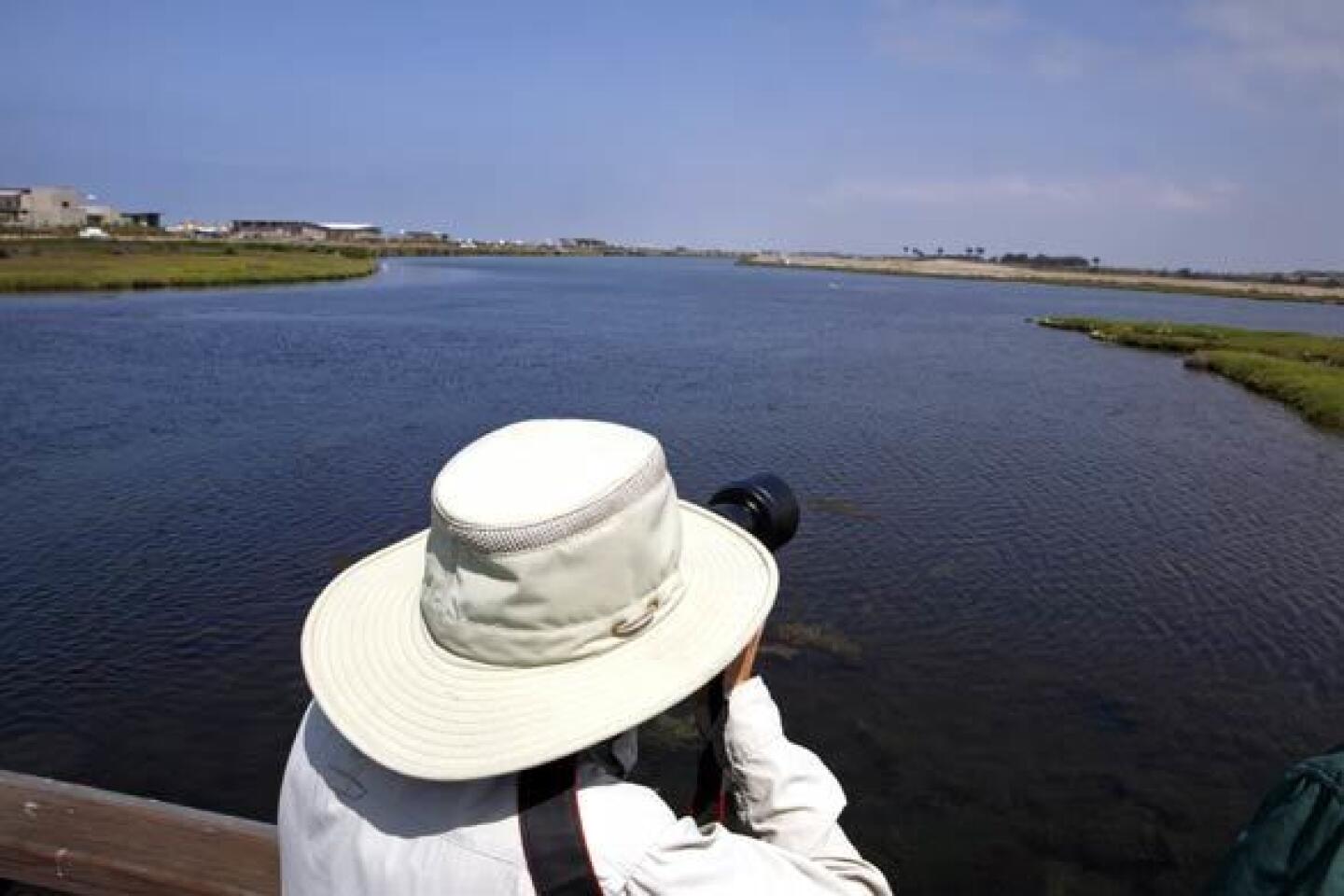Rejuvenated Bolsa Chica wetlands flourishing
- Share via
Two years ago, the saltwater oasis off Pacific Coast Highway was a desiccated oil field littered with drilling rigs.
Now, waters lap sandy shoals next to Bolsa Chica State Beach as thousands of terns squawk and flutter, jammed together in a wall of white feathers and gray chick fuzz.
With every spawning grunion and nesting sparrow, the Bolsa Chica wetlands in Huntington Beach are springing back to life, fulfilling the dream of conservationists who fought for decades to save one of Southern California’s most sensitive ecosystems.
By blasting through part of a parking lot and a century-old barrier created by duck hunters, engineers reconnected the 367-acre tidal basin with the ocean. Since then, a steady parade of sea creatures have found their way to a revived saltwater home, bringing multitudes of hungry shorebirds with them.
The $147-million rebirth has triggered population explosions, with scallops multiplying, followed by topsmelt, halibut, rays and small sharks.
Newly built nesting sites offer refuge for a number of endangered birds, such as the California least tern and the threatened western snowy plover. Endangered California brown pelicans are arriving in record numbers, sunning themselves on freshly added mud flats in a marine habitat that has nearly doubled in size.
“The change is dramatic and continues to improve as time goes on,” said Kelly O’Reilly, associate marine fisheries biologist with the state Department of Fish and Game. “I’ve been watching the place kind of come to life over the last year and a half.”
The transformation of the swatch of undeveloped beachfront property follows nearly 40 years of acrimony and lawsuits between developers, nearby residents and the state and federal governments. Pitting environmental hopes against real estate ambitions, the protracted legal scrum ultimately scuttled plans for a marina and large waterfront neighborhood.
With rows of homes and active oil derricks at its edge, Bolsa Chica serves as a vital island for wetlands dwellers -- and an unexpectedly peaceful spot for visitors.
Experts estimate that about 95% of California’s coastal wetlands have been destroyed by development.
“To see these few remnant wetlands that we still have left is just great,” said Robert Hoffman, an assistant regional administrator for habitat conservation with the National Marine Fisheries Service. “It’s great from an ecological perspective. It’s great from an open-space perspective.”
The project, which rejuvenated more than three-fourths of Bolsa Chica’s roughly 1,300 acres, is the largest restoration of its kind west of the Mississippi, said Jim Trout, the former Bolsa Chica project coordinator for the California State Lands Commission.
As more animals are drawn to this recovering habitat -- including a burgeoning tern population -- they’re forced to live on top of one another, occasionally crushing nests of eggs in their struggle for space.
Biology graduate students shivering in wetsuits wade through the tidal basin with giant nets, capturing and measuring marine life. This fall, managers of the site hope to open gates that will let more ocean water flow into shallower tidal areas; spindly stalks of cordgrass are expected to multiply, providing shelter for the endangered light-footed clapper rail. And 300,000 cubic yards of sand that has washed in from the adjacent beach, providing surprisingly fertile spawning grounds for burrowing grunion, will be dredged in September to keep the tidal channel clear.
In the meantime, Aera Energy continues to operate an oil field next to the basin, as elegant terns plummet headfirst into the water to snatch pipefish. Whenever the company pumps that 248-acre section dry of oil, that property too will be allowed to revert to its natural state.
As the ecosystem changes over the next five years, biologists are anticipating that as many as 60 fish species will settle in Bolsa Chica. (Of 135 species recently observed in the restored area, 27 are fish.) Divers transplanted eel grass from Cabrillo Beach in hopes of providing shelter to the shyer species of fish, such as pipefish and surf perch.
Eight state and federal agencies are overseeing the health of the fledgling wetlands. Monitors regularly observe tidal patterns, fish populations, bird communities and vegetation growth, as occasional adjustments are made to water levels.
The fragile estuary was once fated to give way to about 6,000 homes. Community groups’ lawsuits and negotiations with coastal regulators whittled the proposed development to fewer than 500 homes, said Gerald Chapman, president of the nonprofit Bolsa Chica Land Trust. Funds for the restoration effort, which came mostly from the ports of Los Angeles and Long Beach as part of mitigation requirements for expansion, helped buy out 65 oil wells based on the price of oil at about $14 a barrel. With prices now above $130 a barrel, paying for the project today would be impossible, Trout said.
But environmental activists continue to fight to preserve nearby lands and Native American remains and artifacts found there.
Although the new tidal area remains closed to the public, Huntington Beach Mayor Debbie Cook, a longtime Bolsa Chica advocate, envisions connecting trails from the city’s Central Park through the wetlands to the beach. Supporters also hope to build an interpretive center.
The creation of a flourishing salt marsh where an oil field once stood is “a heck of a lot better than a marina and high-rise hotels and another Marina del Rey,” Chapman said. “People are just wildly surprised that all of these things are here right in their backyard.”
susannah.rosenblatt
@latimes.com
More to Read
Sign up for Essential California
The most important California stories and recommendations in your inbox every morning.
You may occasionally receive promotional content from the Los Angeles Times.
